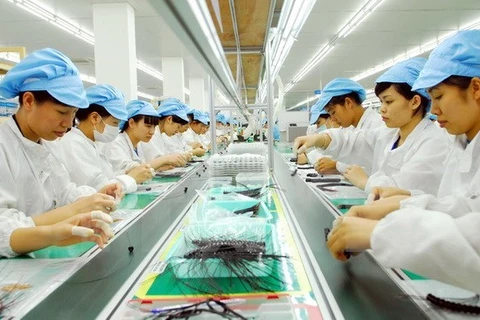Hanoi (VNA) – An official of the National Office for Intellectual Property of Vietnam has urged local businesses to register geographical indication (GI) of their goods if they want to easily make inroads into demanding markets, including the EU.
Luu Duc Thanh, head of the office’s GI and international brand division, underlined the role of GI in the European Union (EU) – Vietnam Free Trade Agreement (EVFTA) at a seminar on GI-related commitments in the pact, in Hanoi on June 29.
In the past, Vietnam had a number of renowned products without GIs, leading to a lack of legal foundation for dealing with counterfeiting. It is good news that now EU markets are supporting the export of Vietnamese goods with GIs registered in the EU, he added.
Vietnam has 43 products with registered GIs at present, varying from flowers, fruits and food to consumer goods. They hail from across the country such as Ha Giang province in the northern mountainous region, Quang Ninh province in the northeast, Thanh Hoa province in the northern central coast, and Vinh Long or Bac Lieu in the Mekong Delta, according to Dao Duc Huan – Director of the Rural Development Centre.
Notably, Phu Quoc fish sauce has had its GI registered in the EU, benefiting both Phu Quoc Island and Vietnam, he added.
He pointed out the lax exploitation and management of Vietnam’s GIs, resulting in the widespread counterfeiting of GIs domestically and abroad.
An obstacle to GI protection is that producers are working separately. As many producers and farmers haven’t fully understood the importance of GI protection, they haven’t cooperated with one another actively, but competed unfairly, affecting the creation of products specific to each region.
Huan also noted a lack of funding for GI registration and overseas market development strategies.
Claudio Dordi, technical assistance team leader of the European Trade Policy and Investment Support Project (EU-MUTRAP), said the effective management of GI-registered goods needs the close coordination of enterprises, industry associations, local managerial agencies, and independent quality certification bodies in each locality.
Vietnam and the EU concluded negotiations on their FTA in Brussels last December.
The EVFTA will eliminate 99 percent of import tariffs on Vietnamese goods to the EU and vice versa after seven to ten years. It is expected to increase Vietnam’s exports to the EU by 4 percent, and EU exports to Vietnam by more than 3 percent each year.
The EU is one of the top trade partners of Vietnam, with two-way trade increasing from 17.75 billion USD in 2010 to 41.4 billion USD in 2015.-VNA

























